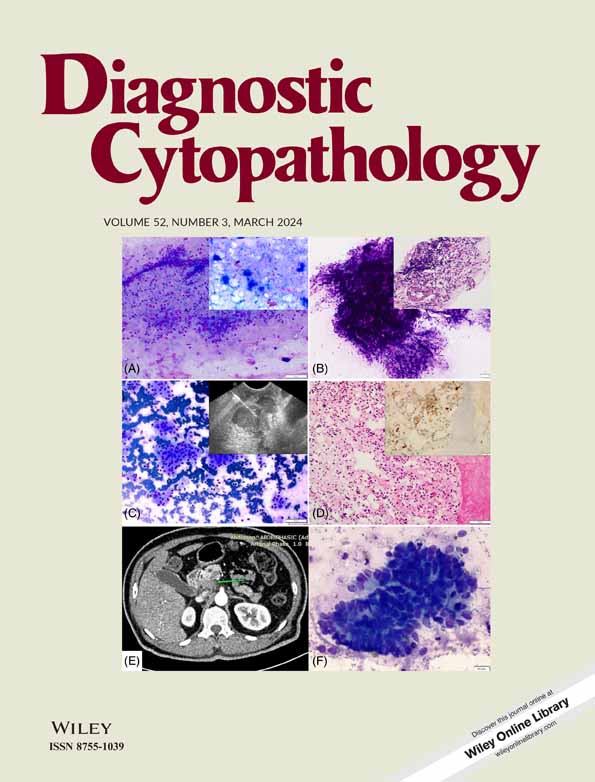Fluorescent periodic acid Schiff-like staining combined with standard cytologic staining of the same cytologic specimen may facilitate cytopathologic diagnosis
Daisuke Hachisuka and Satsuki Nakano contributed equally to this work.
Abstract
Background
Periodic acid Schiff (PAS) staining which detects glycogen and mucosubstances is frequently used as an ancillary method for an accurate cytopathologic diagnosis. Unfortunately, cytologic slides for PAS stain are not routinely prepared. Aqueous 7-amino-4-methylcoumarin (AMC) is colorless and transparent under bright field illumination but exhibits strong fluorescence under ultraviolet (UV) light and can be used as a Schiff reagent. We recently reported that combining [author: Please define (H&E) in the first occurrence if necessary.]H&E and AMC is useful for histopathologic diagnosis of various disease conditions. In this study, we investigated whether standard cytologic staining (Papanicolaou [Pap] and Giemsa) combined with AMC was useful for cytopathologic analysis.
Methods
Specimens of non-neoplastic human tissues and archived cytologic specimens of various disease conditions were stained with a combination of Pap and AMC (Pap/AMC) or Giemsa and AMC (Giemsa/AMC).
Results
The addition of AMC had no significant effect on Pap or Giemsa staining, and the cytomorphology under bright field microscopy was perfectly preserved. The AMC fluorescent signals observed under UV light were intense and the staining pattern was identical to that obtained by PAS staining. Diastase digestion differentiated glycogen from other AMC-positive elements. The efficacy of using Pap/AMC and Giemsa/AMC for archived cytologic specimens was demonstrated in several diseases including cases of endometrial carcinoma, adenoid cystic carcinoma, metastatic signet-ring cell carcinoma, candidiasis, and trichomoniasis.
Conclusion
Pap/AMC and Giemsa/AMC are useful in aiding cytopathologic diagnosis especially when the information gained from PAS staining is critical and cytologic specimens for PAS are not available.
CONFLICT OF INTEREST STATEMENT
The authors declare no conflict of interest.
Open Research
DATA AVAILABILITY STATEMENT
The datasets used and/or analyzed during this study are available from the corresponding author upon reasonable request.




